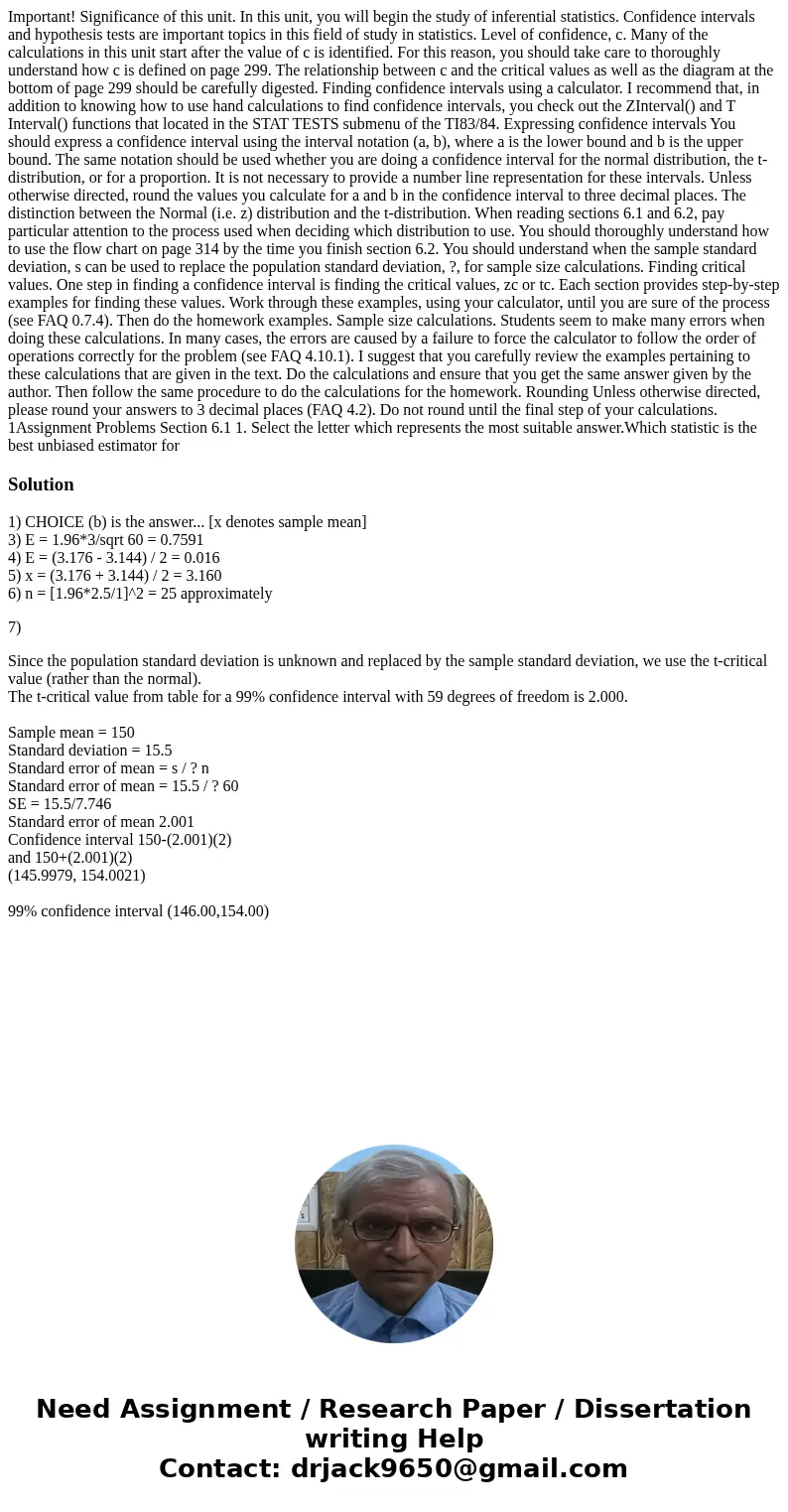Important Significance of this unit In this unit you will be
Important! Significance of this unit. In this unit, you will begin the study of inferential statistics. Confidence intervals and hypothesis tests are important topics in this field of study in statistics. Level of confidence, c. Many of the calculations in this unit start after the value of c is identified. For this reason, you should take care to thoroughly understand how c is defined on page 299. The relationship between c and the critical values as well as the diagram at the bottom of page 299 should be carefully digested. Finding confidence intervals using a calculator. I recommend that, in addition to knowing how to use hand calculations to find confidence intervals, you check out the ZInterval() and T Interval() functions that located in the STAT TESTS submenu of the TI83/84. Expressing confidence intervals You should express a confidence interval using the interval notation (a, b), where a is the lower bound and b is the upper bound. The same notation should be used whether you are doing a confidence interval for the normal distribution, the t-distribution, or for a proportion. It is not necessary to provide a number line representation for these intervals. Unless otherwise directed, round the values you calculate for a and b in the confidence interval to three decimal places. The distinction between the Normal (i.e. z) distribution and the t-distribution. When reading sections 6.1 and 6.2, pay particular attention to the process used when deciding which distribution to use. You should thoroughly understand how to use the flow chart on page 314 by the time you finish section 6.2. You should understand when the sample standard deviation, s can be used to replace the population standard deviation, ?, for sample size calculations. Finding critical values. One step in finding a confidence interval is finding the critical values, zc or tc. Each section provides step-by-step examples for finding these values. Work through these examples, using your calculator, until you are sure of the process (see FAQ 0.7.4). Then do the homework examples. Sample size calculations. Students seem to make many errors when doing these calculations. In many cases, the errors are caused by a failure to force the calculator to follow the order of operations correctly for the problem (see FAQ 4.10.1). I suggest that you carefully review the examples pertaining to these calculations that are given in the text. Do the calculations and ensure that you get the same answer given by the author. Then follow the same procedure to do the calculations for the homework. Rounding Unless otherwise directed, please round your answers to 3 decimal places (FAQ 4.2). Do not round until the final step of your calculations. 1Assignment Problems Section 6.1 1. Select the letter which represents the most suitable answer.Which statistic is the best unbiased estimator for
Solution
1) CHOICE (b) is the answer... [x denotes sample mean]
3) E = 1.96*3/sqrt 60 = 0.7591
4) E = (3.176 - 3.144) / 2 = 0.016
5) x = (3.176 + 3.144) / 2 = 3.160
6) n = [1.96*2.5/1]^2 = 25 approximately
7)
Since the population standard deviation is unknown and replaced by the sample standard deviation, we use the t-critical value (rather than the normal).
The t-critical value from table for a 99% confidence interval with 59 degrees of freedom is 2.000.
Sample mean = 150
Standard deviation = 15.5
Standard error of mean = s / ? n
Standard error of mean = 15.5 / ? 60
SE = 15.5/7.746
Standard error of mean 2.001
Confidence interval 150-(2.001)(2)
and 150+(2.001)(2)
(145.9979, 154.0021)
99% confidence interval (146.00,154.00)

 Homework Sourse
Homework Sourse